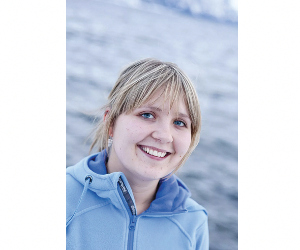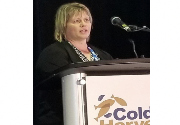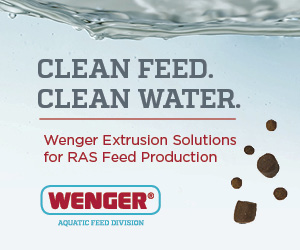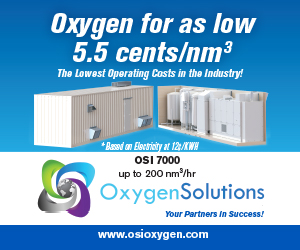| |
| |
| |
 |
|
November 15, 2019 |
|
| |
 A land-based shrimp farm in Langley, British Columbia, has buckled under the weight of high production costs.
» Read more
A land-based shrimp farm in Langley, British Columbia, has buckled under the weight of high production costs.
» Read more
Are you involved in aquaculture research? You can now apply for full European Commission-funded access to top-class research facilities through Aquaexcel2020.
» Read more
Salmon producers in British Columba will now have access to innovative DNA sequencing at the British Columbia Centre of Aquatic Health Sciences.
» Read more
Mowi ASA has appointed Ivan Vindheim as the company’s new chief executive officer, replacing Alf-Heige Aarskog, who has stepped down effective Nov. 12.
» Read more
|
| |
 |
| |
|
| |

In a span of less than three years, Marit Holmvaag Hansen transitioned from smolt coordinator to production manager, leading around 30 staff members and overseeing the production of up to 15 million smolts at Cermaq Norway’s smolt and hatchery sites.
Learn More |
| |
|
| |
 Grieg Newfoundland’s massive RAS project in Marystown, Newfoundland and Labrador, Canada, is progressing well as construction of two of the planned five facilities are currently underway.
» Read more
Grieg Newfoundland’s massive RAS project in Marystown, Newfoundland and Labrador, Canada, is progressing well as construction of two of the planned five facilities are currently underway.
» Read more |
| |
|
| |

For RAS feeds to have the cleanest and most functional properties possible, they must be produced on precision technology. Ultimate control of the process, highly flexible ingredient selections and the widest range of species and feed performance are possible only on the dedicated line of Wenger RAS extrusion systems. Based on renown, first-class Wenger platforms, the new RAS extrusion systems have been specifically designed and fine-tuned for feed performance unmatched in the market. With a global network of process and service experts, Wenger has the equipment and know-how to allow you to be on the cutting edge of the quickly expanding RAS industry, regardless of size, location or species.
Find out more about High Performance RAS Feed Production
Learn more |
| |
|
| |
 Physical characteristics of aqua feed pellets have always been important to farmers. For years, high expectations have centered around the requirements of consistent size (diameter), correct buoyance, pellet durability during transportation and handling, and longevity once placed in water, with the farmer’s eye and the fish’s consumption rate and efficiency being the top deciding factors on whether a feed’s performance was acceptable or not.
» Read more
Physical characteristics of aqua feed pellets have always been important to farmers. For years, high expectations have centered around the requirements of consistent size (diameter), correct buoyance, pellet durability during transportation and handling, and longevity once placed in water, with the farmer’s eye and the fish’s consumption rate and efficiency being the top deciding factors on whether a feed’s performance was acceptable or not.
» Read more |
| |
|
| |

|
| |
| |







